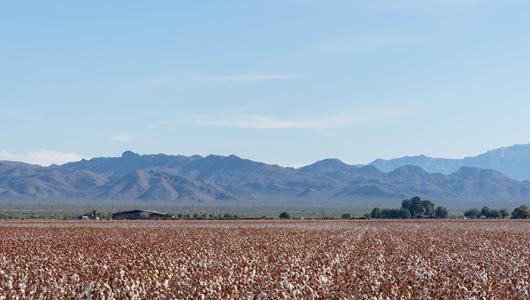During national pollinator week, Amy Bartow, manager at the USDA Natural Resources Conservation Service Plant Materials Center in Corvallis, Oregon, answers a few questions about pollinator plants and selecting the right seeding mix in this Ask the Expert.
One out of three bites of every meal exists because of the work of pollinators. And for pollinators to thrive, they need habitat for food, shelter, and even nest building materials. Amy researches pollinator habitat and soil health on the 50-acre research farm in Corvallis. Their research looks for vegetative solutions to natural resource concerns, and for sharing what is learned with conservation staff and landowners.
What are the benefits of adding pollinators to your farm or property?
The possible benefits are endless. Pollinator plants help improve soil health by adding diversity to the landscape, increasing the number of living roots throughout the year, and providing cover that protects soil from erosion. Pollinators, such as insects, not only provide pollination services that help increase food production, but they are also a major part of the food web, serving as an important source of food for birds, especially for when they are rearing their young. And the obvious benefit of beautification from the colorful blooms and majestic grasses.
What makes a good pollinator seeding mix?
Diversity and length of bloom time are very important. Variation in flower types, color, and bloom time will benefit more pollinators for a longer time. If the pollinator mix is meant to last for multiple years, it’s important to have a balance of annual and perennial species.
Annuals produce a lot of blooms in the first few years but tend to disappear from mixes over time. Perennials are slow to establish, usually not blooming until their second year but will provide consistent bloom for many years.
Finding a balance of these two types of plants is important for a long-term planting. In the Pacific Northwest, we find that mixes containing about 25 percent annuals (based on the number of seeds in the mix) and 75 percent perennials, seem to achieve high levels of bloom for multiple years. If annual cover is desired, using a diverse mix of annuals that provide a long bloom season would be ideal.
How do you determine seeding rate?
Seeding rates vary in different parts of the country. They are based on the length of the growing season, availability of resources, and weed pressure. In arid places with low weed pressure, rates of 20 seeds per square foot may be adequate. In temperate areas with ample rain and long growing seasons, 60 seeds per square foot recommended for good cover. It’s best to check with your local NRCS office for seeding recommendations for your area and soils.
Are non-natives ever a good idea to plant?
That is a good question. First, never use plants that are invasive or listed as noxious weeds in your area. Pollinators evolved along with native plants, so natives are likely the best choice for the bulk of any pollinator seeding mix. The biochemistry of native plant pollen and nectar is the best match for the biochemical needs of native pollinators. However, many pollinators are generalists and will use non-native plants as a food source.
What are the biggest challenges when establishing pollinator plants?
Weeds tend to be the most challenging aspect. If establishing pollinator plants from seed, you need bare ground. This involves killing some, if not all, of the existing plant community. This is done by smothering, solarizing, tilling, or chemicals. And in most soils, there is a massive bank of weed seeds waiting to germinate as soon as the soil is bare. If the weed seed bank can be reduced, your seeds will have less competition. Also, overtime grasses may dominate the planting and reduce the number of flowering forbs. This can a challenge to manage, so we recommend using very low rates of native bunchgrasses in a pollinator mix.
What are good resources for someone interested in pollinators?
A few good sources include:
- The National Plant Materials Program provides information about pollinator habitat, monarchs, and other insect pollinators.
- The Xerces Society has some of the best regionally specific information available.
- Your local NRCS office can provide pollinator advice and recommend possible sources of financial assistance.
Service Center staff continue to work with agricultural producers via phone, email, and other digital tools. Some USDA Service Centers are now open to limited visitors by appointment only. Contact your Service Center to set up an in-person or phone appointment. Additionally, more information related to USDA’s response and relief for producers can be found at farmers.gov/coronavirus.
Laura Crowell is a regional public affairs specialist for USDA’s Farm Production and Conservation Business Center serving states in the Northwest and Northern Corn Belt.


